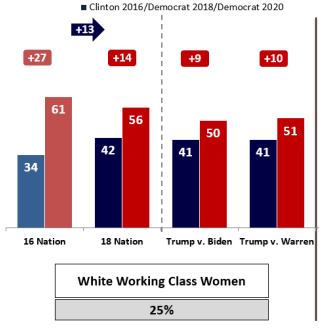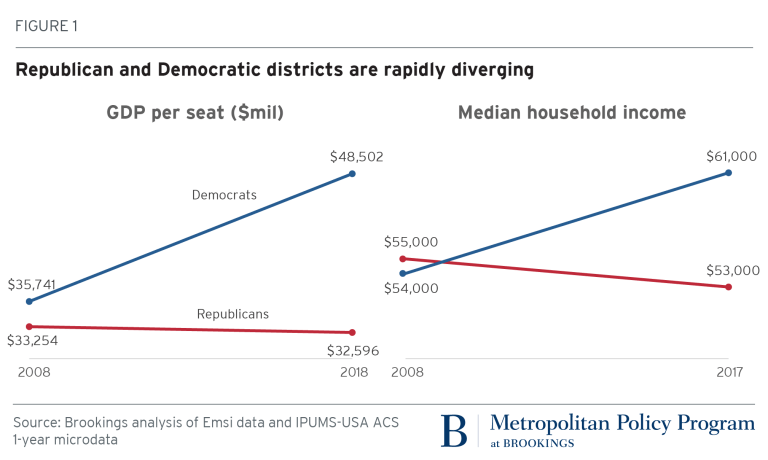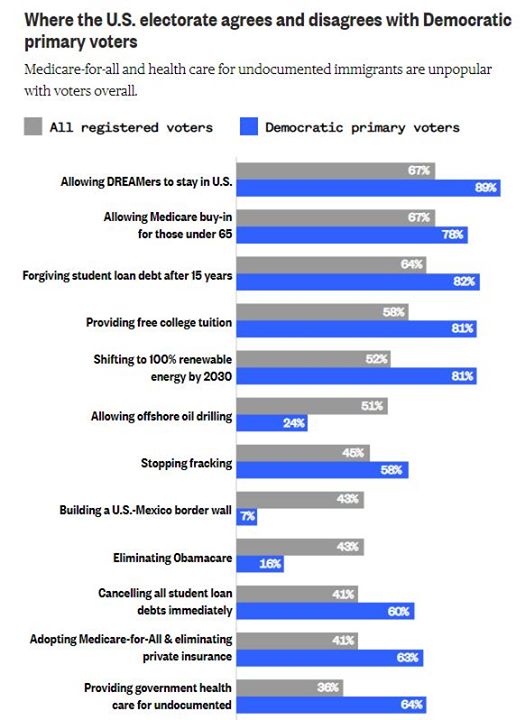As part of the effort to become an expert on All Things Impeachment, I did some recent historical research, and wrote up what I learned at New York:
Now that Nancy Pelosi and House Democrats have, as Intelligence Committee chairman Adam Schiff put it, “crossed the Rubicon” to support impeachment proceedings against President Trump, the big questions are how public opinion might evolve on the subject and then how it might affect the 2020 elections. Indeed, as long as the odds against the Senate convicting Trump on impeachment charges are roughly a billion to one, the political fallout is really the only ultimate question, other than, perhaps, some post-presidential legal consequences for Trump.
As my colleague Sarah Jones has noted, there’s some initial polling showing a quick uptick in support of impeachment in the immediate wake of the Ukraine scandal breaking. And that’s not too surprising: You’d figure the sudden lurch in the direction of impeachment among House Democrats in marginal districts that pushed Pelosi off the fence would be echoed among Democratic voters hearing the same evidence of presidential malfeasance.
But what can we expect in the near future? Obviously, much will depend on the nature of the evidence that unfolds and how the two parties and the media handle it. But there are the two recent precedents: the march toward impeachment of Richard Nixon (who resigned right as the House was poised to impeach him) and Bill Clinton (who was impeached by the House and acquitted by the Senate). In looking at how public opinion evolved during these two sagas, it’s helpful to distinguish three things: public support for impeachment and removal, the president’s job-approval ratings, and the most immediate electoral consequences.
It’s also important to understand the different timelines of the Nixon and Clinton “scandals.” The televised Senate Watergate hearings began in May 1973, with articles of impeachment not drafted by the House Judiciary Committee until late July 1974, just days before Nixon’s resignation. The Monica Lewinsky scandal went public in January 1998. The special prosecutor’s report from Ken Starr recommending impeachment of Clinton was released that September, with impeachment concluded in December and then the Senate trial in January and February of 1999.
One clear thing about public opinion in both of these incidents is that support for impeachment took a long time to develop in Nixon’s case and never developed at all in Clinton’s. On average, Americans are resistant to impeachment, even of presidents they really dislike.
As a Pew Research postmortem noted, Americans opposed impeachment and removal of Nixon by a 51-to-38 margin in November 1973, even after weeks of heavily watched Watergate hearings and the incident often thought of as the beginning of the end of the Nixon presidency: his “Saturday Night Massacre” — the firing of special prosecutor Archibald Cox, followed by the resignation of the attorney general and the top assistant attorney general in protest. Majority support for impeachment and removal did not emerge in Gallup polling until just prior to Nixon’s resignation.
In Clinton’s case, support for impeachment and removal over the Lewinsky scandal was never very high and actually got lower as Congress moved in that direction. Pew started asking this question in March 1998, when allegations of Clinton lying under oath about Lewinsky were far from being generally accepted: “If it turns out that President Clinton lied under oath about having a sexual relationship with Monica Lewinsky, do you think that he should be impeached and removed from office, or not?” The yes-no ratio in answering that question went from 40-55 in March to 31-63 in late July to 30-66 in late August. Even after the Starr report was released and the House held impeachment hearings, support for actual impeachment generally ranged from the mid-30s to the low 40s. It never became a popular option.
The biggest contrast between public opinion during Watergate and the Lewinsky scandal, though, involved presidential-approval ratings. In January 1973, the newly reelected (by a 49-state landslide) Richard Nixon had a Gallup job-approval rating of 68 percent. By April, after heavy publicity about Watergate and the forced resignations of Nixon’s top-two aides, his approval rating was down to 48 percent. And by and large, it just kept sinking: down to 31 percent in August 1973, then to 25 percent in May 1974. The Watergate scandal was not, of course, the only thing going on: the economy fell into recession accompanied by “stagflation” (high inflation and slow growth) in November 1973 (just after the OPEC oil embargo, which boosted oil prices fourfold in months), and the Vietnam War was lurching toward its unsatisfactory conclusion. But in any event, Nixon’s unpopularity far outstripped support for impeachment and removal until very near the end of the saga.
Clinton’s Gallup job-approval rating was at 58 percent the week after the Lewinsky story first broke, and if anything improved during the entire saga of investigation and impeachment. It was at 66 percent the week after the Starr report with its salacious details was published and widely read, it rose to a dizzying 73 percent the day after the House impeached Clinton, and it was at 68 percent the day after the Senate acquitted him. The more rarely measured (for sitting presidents, anyway) personal-favorability ratings for Clinton were unsurprisingly softer, but Pew had his favorable-unfavorable ratio at 55-43 the week he was impeached.
As with Nixon, there were other things going on: a sustained economic boom; an extended period of peace and prosperity; an atmosphere of relatively robust bipartisanship despite divided partisan control of the federal government (even as they were trying to remove him from office, congressional Republicans were begging Clinton to work with them on “entitlement reform”); a president who seemed able to “compartmentalize” very well (unlike Nixon, who slowly fell apart under the pressure of Watergate). But ultimately, it’s hard to avoid the impression that Americans didn’t condemn Clinton mostly because they didn’t regard lying about sex as an impeachable offense. An October 1998 Gallup–CNN–USA Today survey asked respondents to compare the gravity of Nixon’s and Clinton’s misconduct, and Nixon was the One by a landslide (his sins were adjudged as worse by a 64-to-10 margin, despite the obvious temptation for Republicans to go the other way).
These very different trends in job approval during an impeachment crisis turned out to be a pretty good guide to the electoral consequences as well. Obviously, Nixon left office, but in part because his successor immediately took the very unpopular step of pardoning him, Republicans were drubbed in the 1974 “Watergate election” midterms, losing 49 House seats, four Senate seats, and four governorships. Democrats subsequently regained control of the White House in 1976 in a sharp reversal of the 1972 Nixon landslide.
The 1998 midterms fell smack in the middle of the Republican Congress’s drive toward impeachment of Clinton, and the party that did not control the White House failed to gain House seats in a midterm for the first time since the 1930s. It was considered such a disaster for Republicans that Speaker Newt Gingrich resigned. This development is often cited as a warning to today’s House Democrats about pursuing an impeachment that is not supported by the public. On the other hand, as Ron Brownstein points out, the 1998 midterm was really more of a status-quo election than a rebuke of the GOP:
“[W]hen the House considered impeachment in December 1998, almost all of them voted for at least one of the two articles of impeachment that the chamber approved. (Just four House Republicans, each of them representing districts that voted for Clinton, opposed both articles.)
“And then, after effectively voting to cancel out their constituents’ presidential votes, almost all of the Clinton-district Republicans who sought reelection won it in both 1998 and 2000.”
Republicans, of course, also regained the White House in 2000 (though not without a big assist from the U.S. Supreme Court) after an election campaign in which Al Gore visibly struggled to separate himself from Clinton.
So what are the implications of this history?
First, support for impeachment and removal appears to be a lagging indicator of how the public feels about an embattled president caught in unsavory misconduct. House Democrats probably shouldn’t worry about it that much early on unless the trend lines go south on them.
Second, the number to watch in terms of political fallout is probably not support for or opposition to impeachment or removal but Trump’s job-approval rating. It has, as is universally understood, been amazingly stable (and underwater) throughout his presidency. If it moves up or down sharply, that could be significant. And if it stays the same, at least House Democrats can stop worrying about endangering their party by doing the right thing.
And third, it probably matters less what Americans think Congress should and should not do about Trump than what they think about Trump’s behavior. If House Democrats are right that the Ukraine scandal is both easy to understand and highly incriminating, the trajectory of the president’s popularity may look more like Nixon’s than Clinton’s.
Finally, it’s worth remembering that this is a very small sample of precedents from which we can learn. Chief executives like Nixon, Clinton, and Trump are not the norm. And while there’s almost always some impeachment sentiment kicking around the fever swamps in times of high partisan polarization, this is a situation nearly as strange as the very existence of a Trump presidency. So it would be smart for everyone in the line of fire in the next year or so to keep an open mind and nimble feet.











